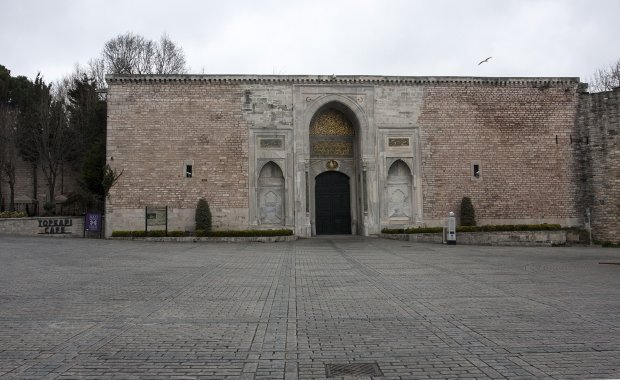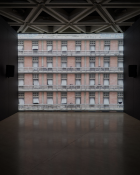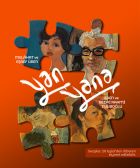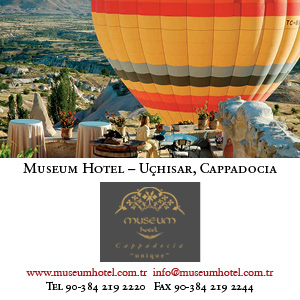On a dark Saturday morning in March I set off on my bicycle to explore a silent, empty Istanbul. But my enthusiasm for the idea of experiencing the normally bustling districts of Taksim, Sultanahmet and Üsküdar with no people around quickly gave way to a realisation: how difficult it is to capture what is no longer there!
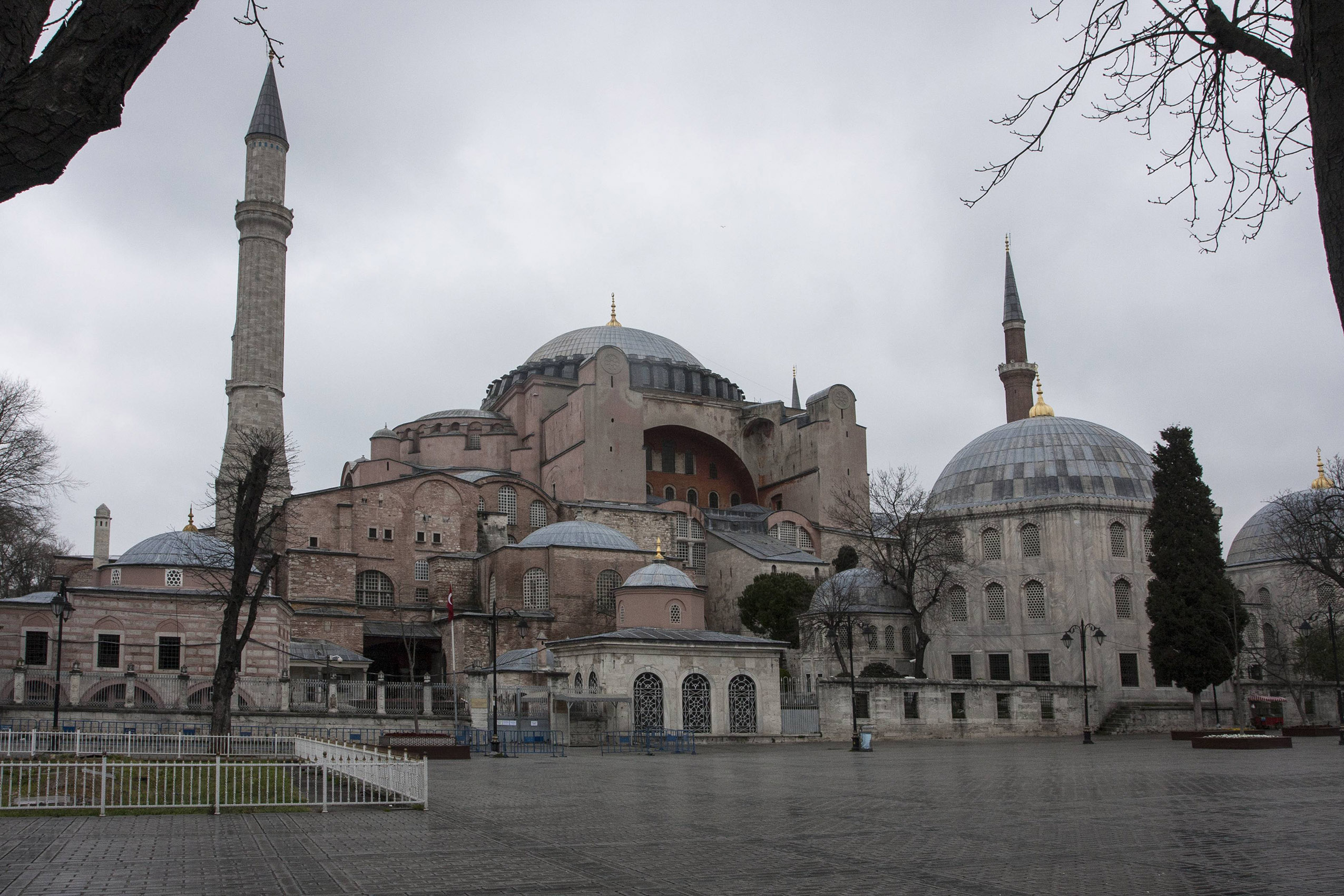
In front of Ayasofya, closed to the public, the wet pavement mirrors the Byzantine and Ottoman architecture and nothing else.
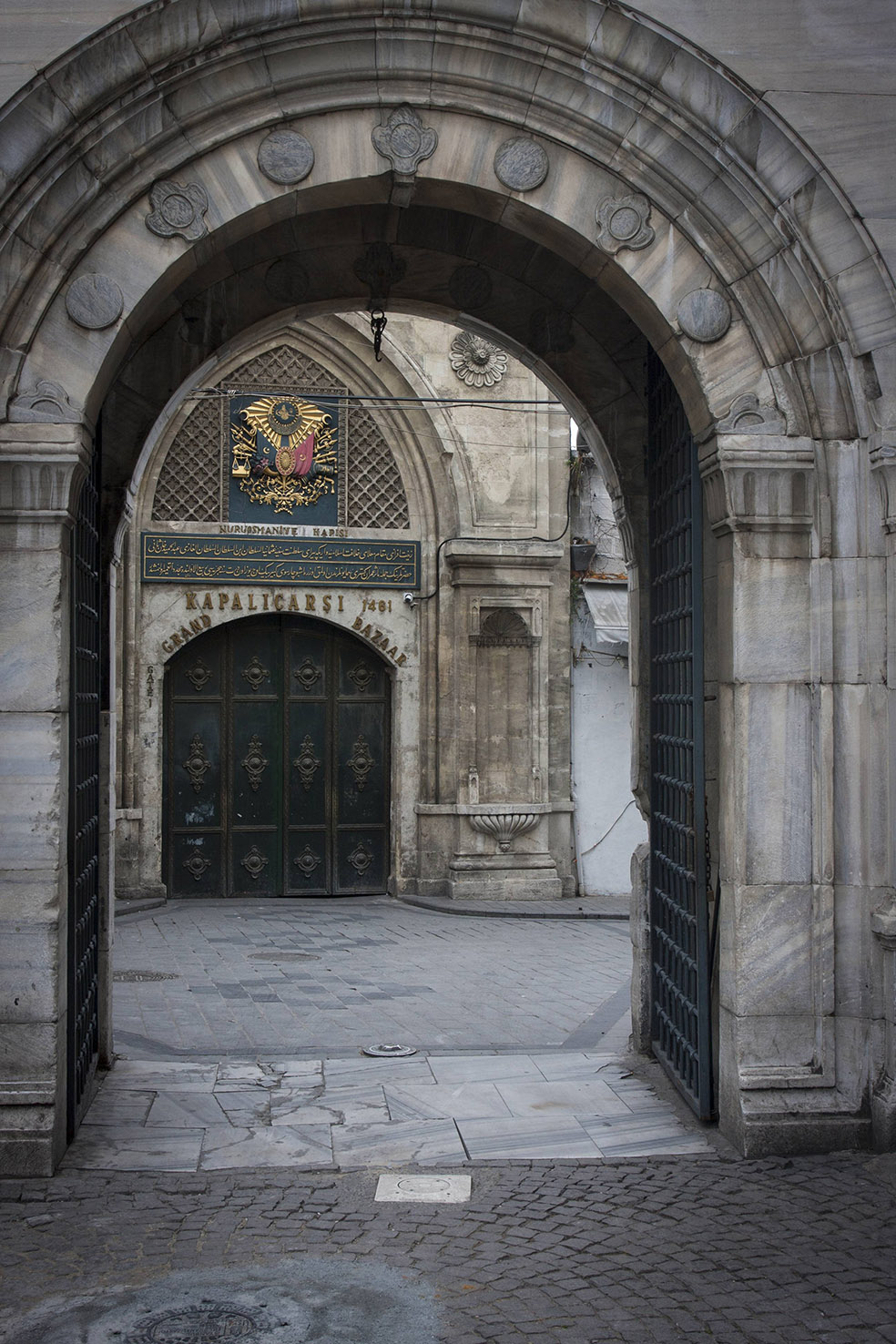
The Grand Bazaar, too, is closed – all its colours, smells and noises gone, as are the crowds normally squeezing through the Nuruosmaniye Gate into the old bazaar's covered streets.
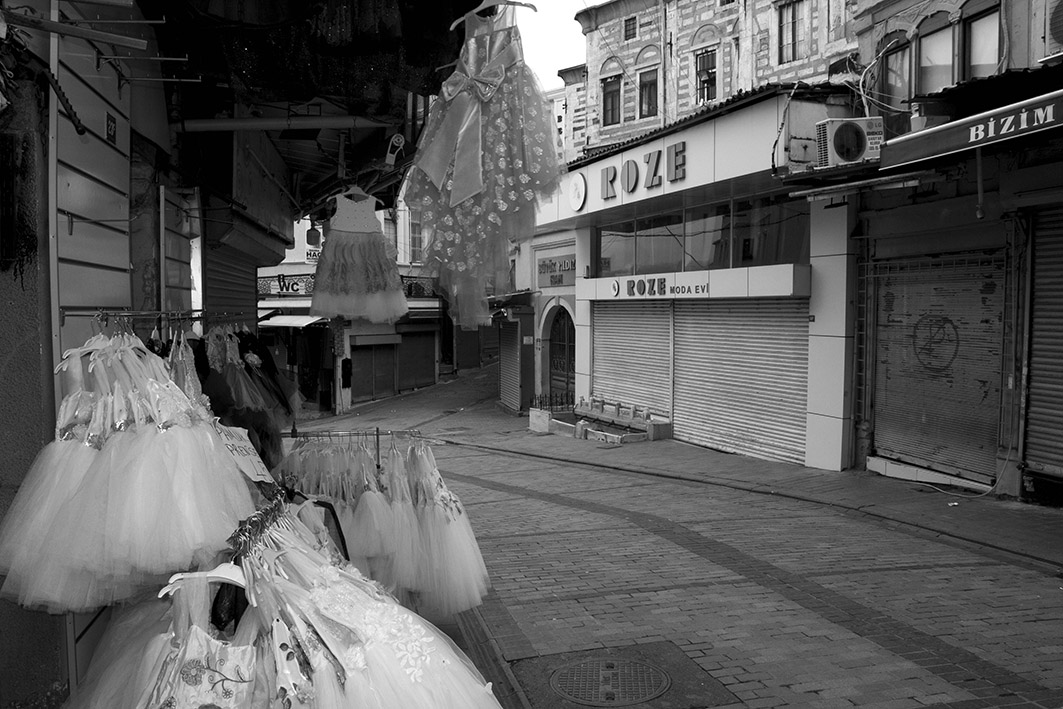
Though hardly any customers come to shop in Mahmutpaşa, the district below the Grand Bazaar, one merchant still opens his shop selling children's ballerina dresses. 'What else can I do but be here?' he asks.
.jpg)
In the shadow of Ayasofya, road signs stand ready to direct non-existent visitors.
.jpg)
Empty benches under a grey sky in front of the Sultan Ahmet Mosque. Silence reigns.
.jpg)
Only a few pigeons gather around the German Fountain, waiting for the bread and simit usually supplied by passers-by.
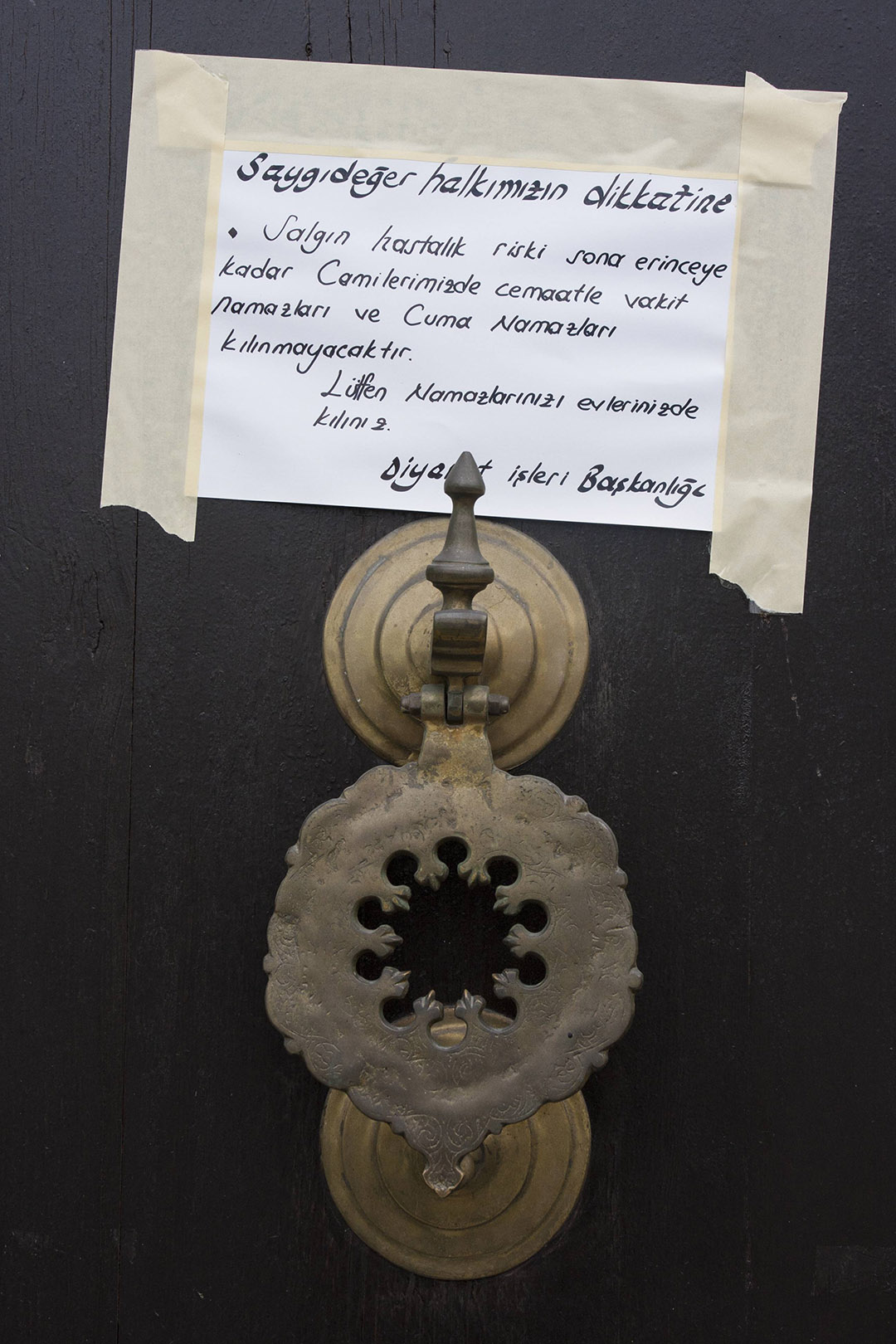
Pandemics pay no heed to religion.
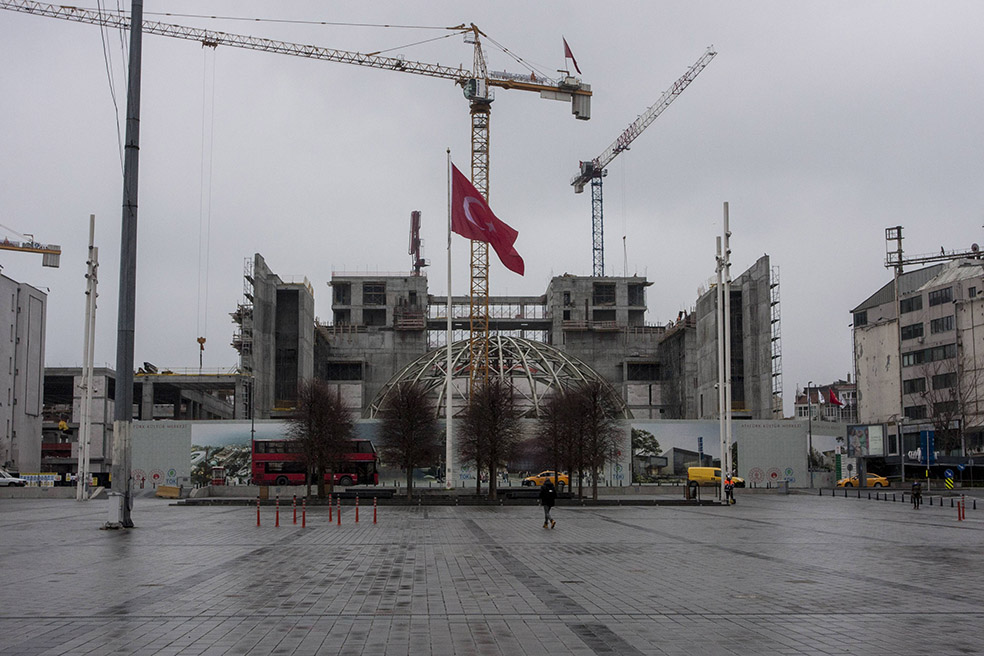
The Atatürk Cultural Centre at Taksim – only on construction sites are there signs of life.
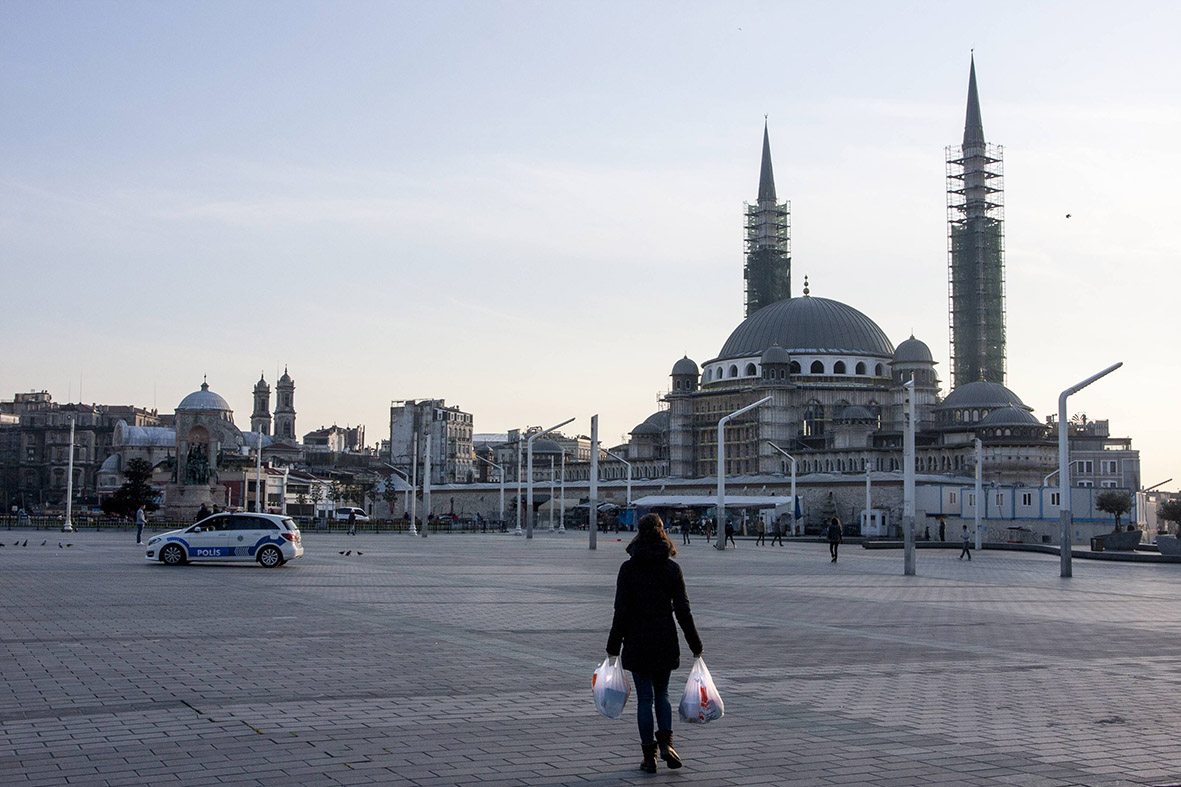
A woman crosses Taksim Square with her shopping bags. Only shopping singly is permitted, and the police are watching.
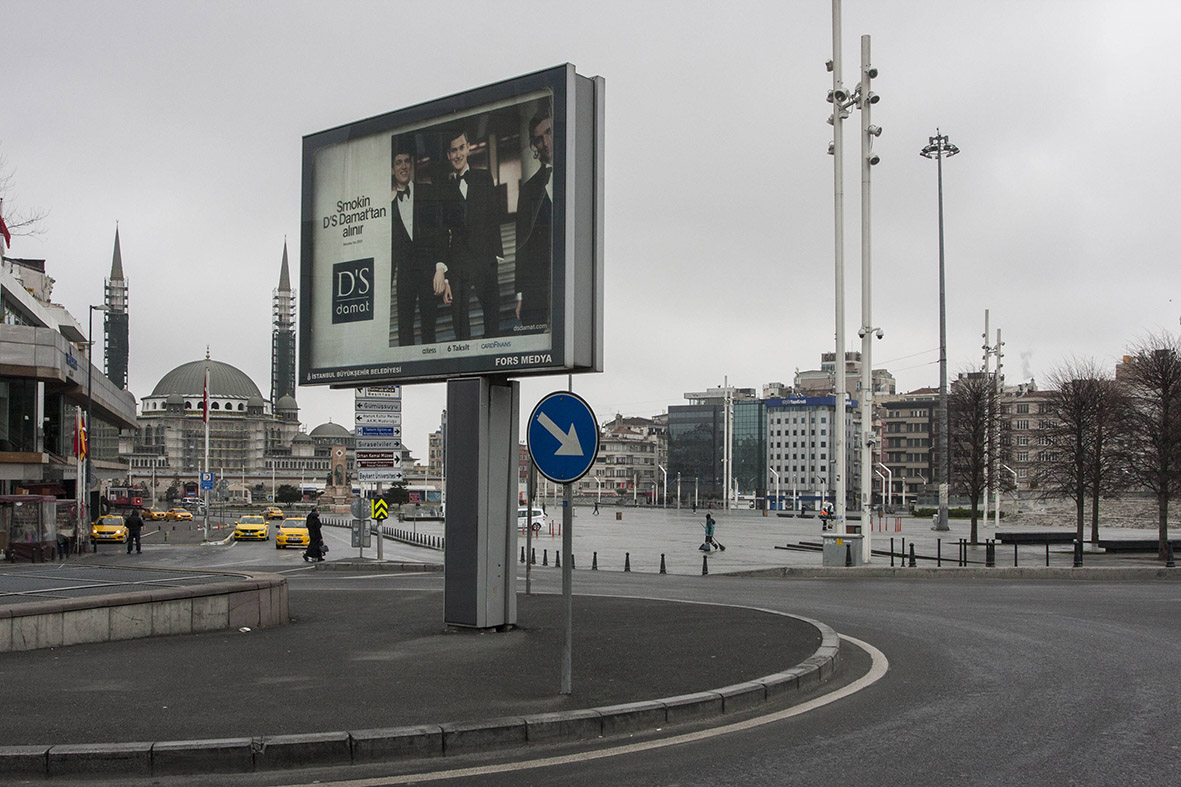
Advertising with barely a soul to advertise to, for shops that are closed for the foreseeable future.
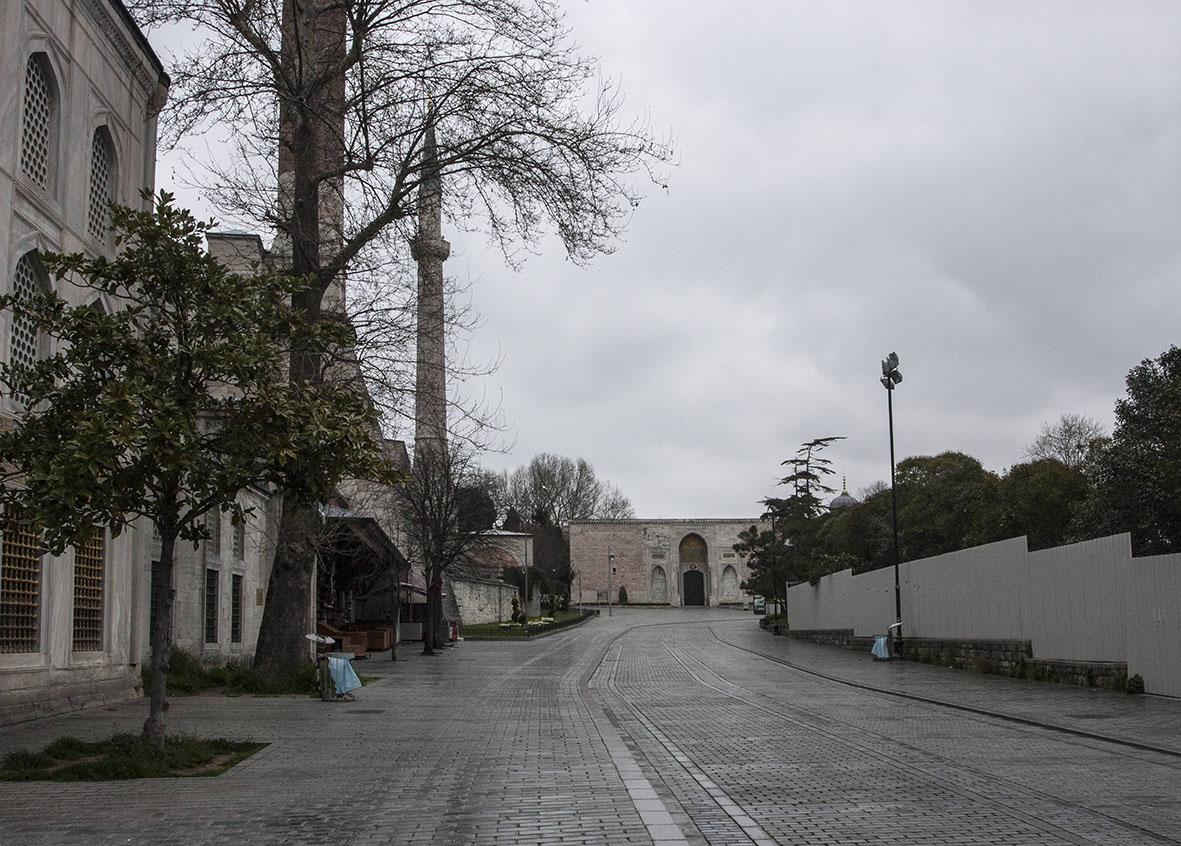
Alone in front of the gates of Topkapı Sarayı, usually crammed with tourists visiting the palace.
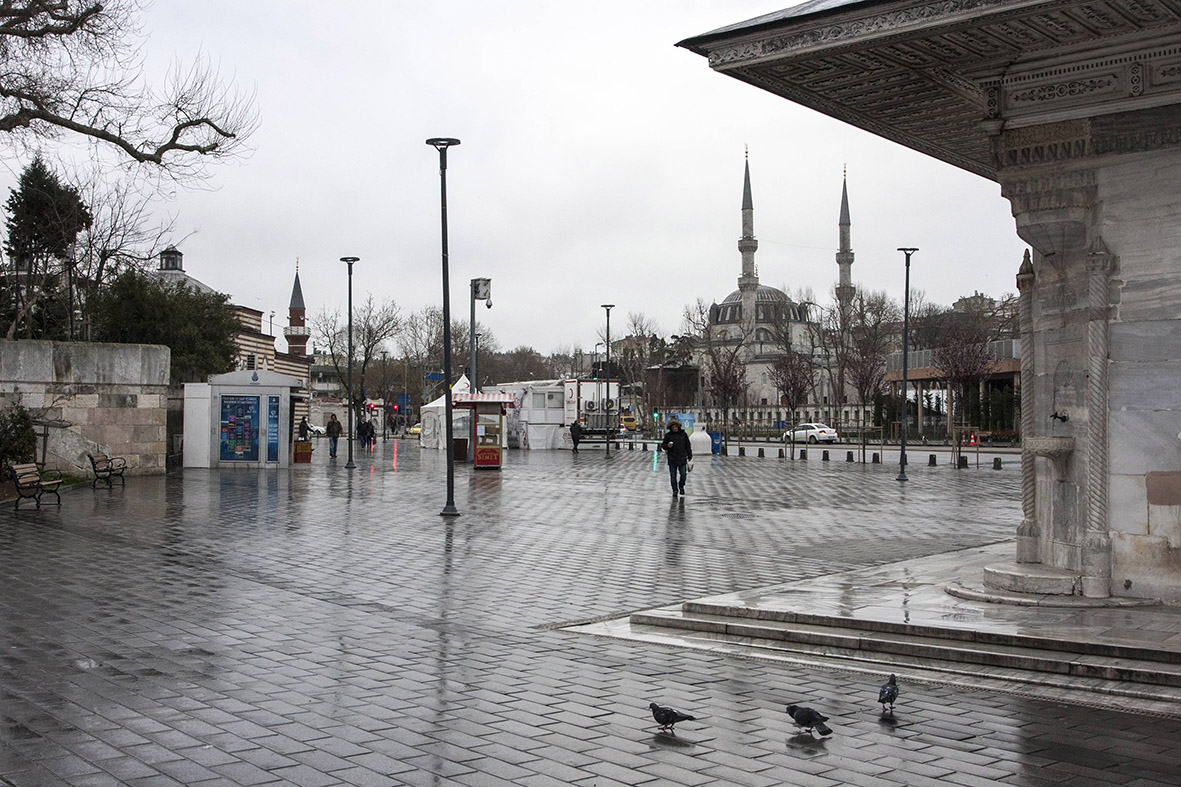
Üsküdar, March 2020. Not only people have disappeared from the streets – cars have too. But the air is cleaner than ever before.
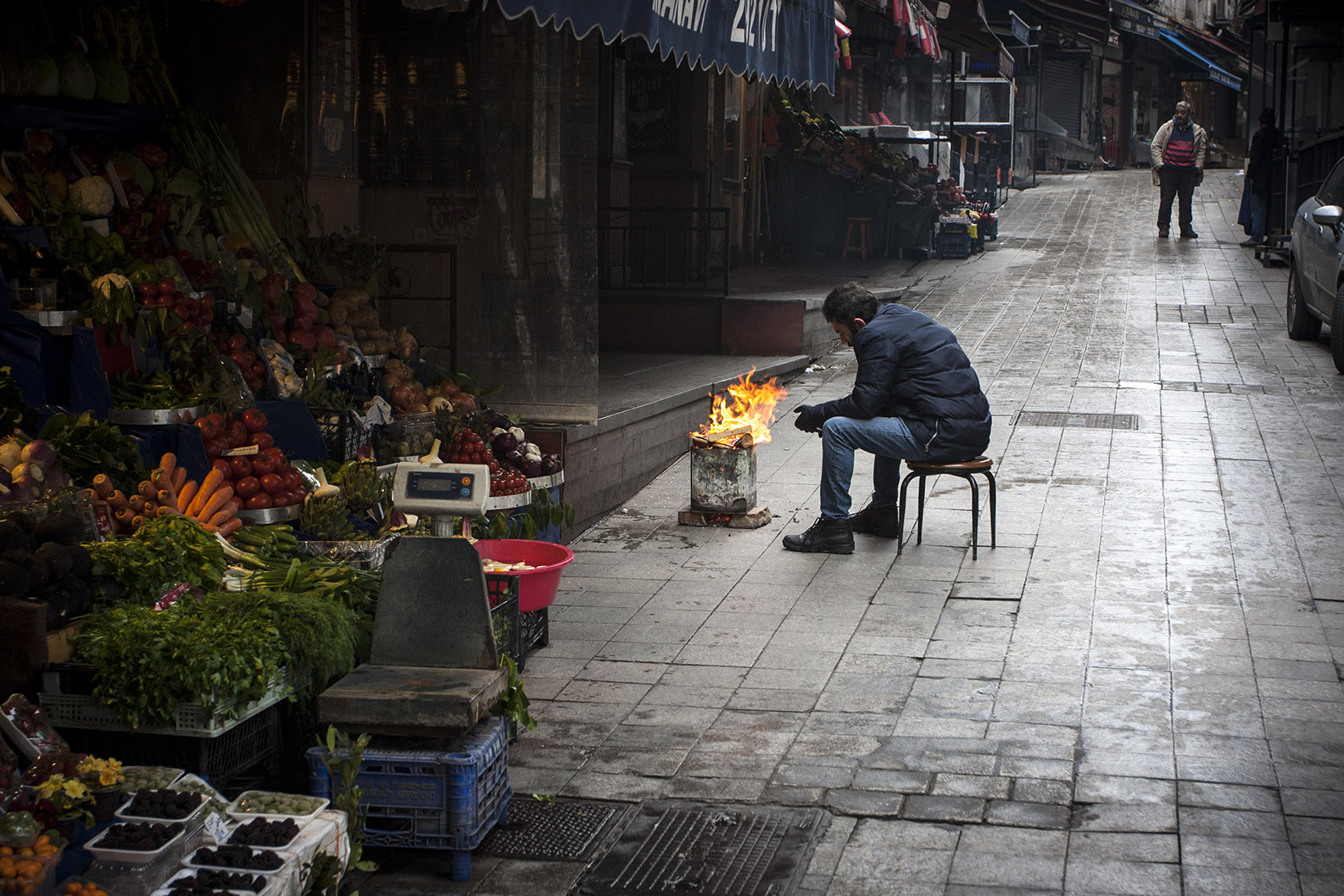
A colourful fruit stall recalls the joy of old Beyoglu.

